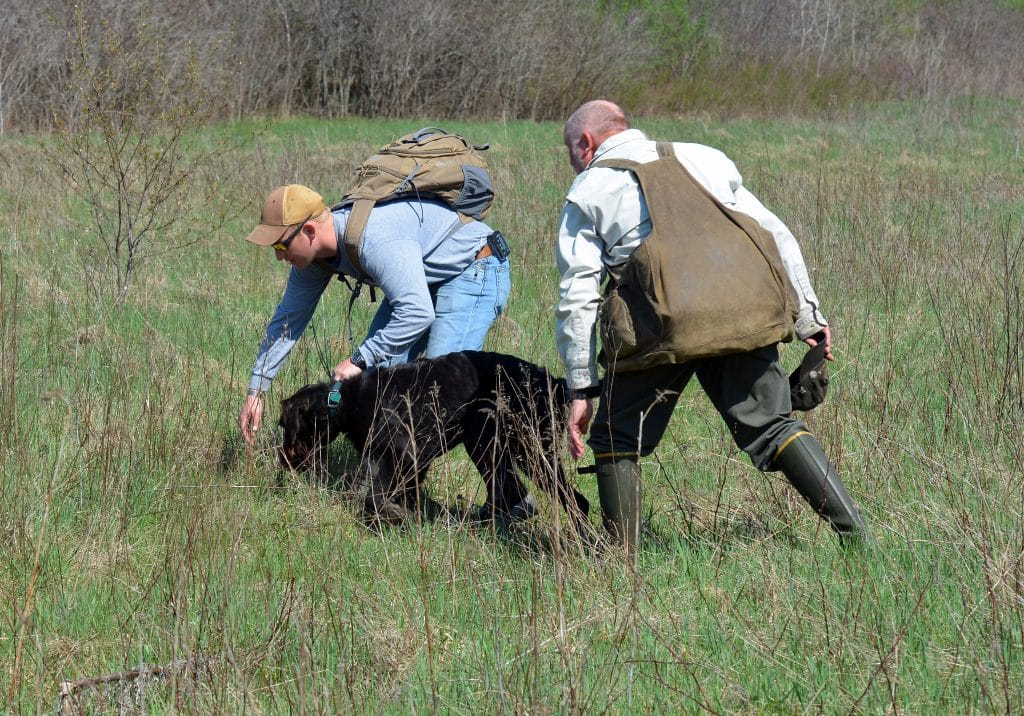
Heartland Spring Test 2016
Mazomanie, WI
Get ready to test your dog. It’s fun and the club needs every dog to be tested. Click each link for details.
Natural Ability.
Intermediate Hunting Dog. (Note: Water Search rules have been changed in 2023)
Utility Field Test.
Where we test:
| Chapter | Test Link | When | Location |
|---|---|---|---|
| Rocky Mountain Chapter | Rocky Mountain Test | Spring | Idaho |
| Northeast Chapter | Northeast Test | Spring, Fall | Maine |
| Southeast Chapter | Southeast Test | Spring | South Carolina |
| Northwest Chapter | Northwest Test | Fall | Washington |
| Heartland Chapter | Heartland Test | Spring, Fall | Wisconsin |
Links to details and rule books:
Natural Ability Test (NAT)
Intermediate Hunting Dog Test (IHDT)
Utility Field Test (UFT)
Scoring System for All Tests
While each of the three tests differ in their requirements, the judging always stays the same. Each dog’s performance in each category of the tests is scored using the point system listed below.
| no | Value | score |
|---|---|---|
| 1 | very good | 4 points |
| 2 | good | 3 points |
| 3 | satisfactory | 2 points |
| 4 | poor | 1 point |
| 5 | failure | 0 points |
A judging group is always composed of 3 judges with one being designated “senior.” The senior judge is responsible for leading the tests. The senior judge makes sure hunting situations are set up properly and that testing moves along in a timely manner. This person also acts as spokesperson for the group; explaining to the spectators what has taken place, explaining to handlers what is expected of them in each test situation; and, in the end, reading the test scores.
One or more apprentice judges often accompany these judges. These are individuals who have an interest in someday becoming judges themselves and represent the future of this foundation. While these persons don’t have a say in the actual scoring of dogs, they are required to make evaluations throughout the test, write their observations down, give a score, and take part in discussions. This “hands-on” learning is invaluable in training potential judges. Aside from apprenticing, individuals are also required to run a dog through all three tests (Natural Ability, Intermediate Hunting Dog and Utility) before becoming judges.
The purpose of these tests is to evaluate dogs at different stages in their development in order to give breeders the information needed to make informed decisions for their breeding program. We strongly recommend that ALL the dogs from a litter be tested in order to get an accurate picture of a breeding. This data helps determine if the sire and dam should be used in future breedings. A pup from a litter where all litter mates performed well is a stronger candidate for inclusion in the breeding program than one whose siblings were weak. Although high scores result in a Prize I, II or III, the purpose of testing is not a competition to determine the best dog at the test; the purpose is more akin to quality control testing, where the best possible outcome would be for all dogs tested to score well. Our goal is to consistently produce excellent hunting griffons so that every prospective owner can be confident of obtaining a superb gun dog. The best possible outcome would be for all the dogs to achieve Prize I scores.
